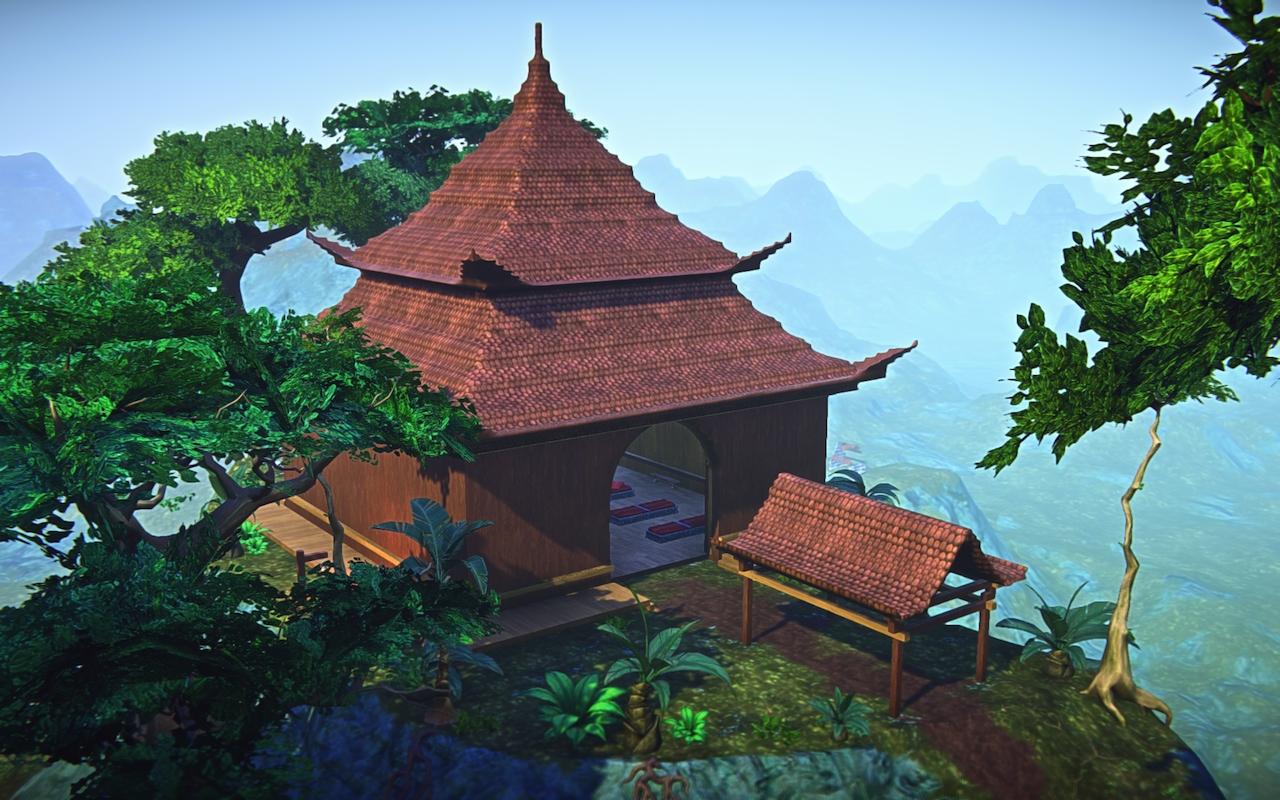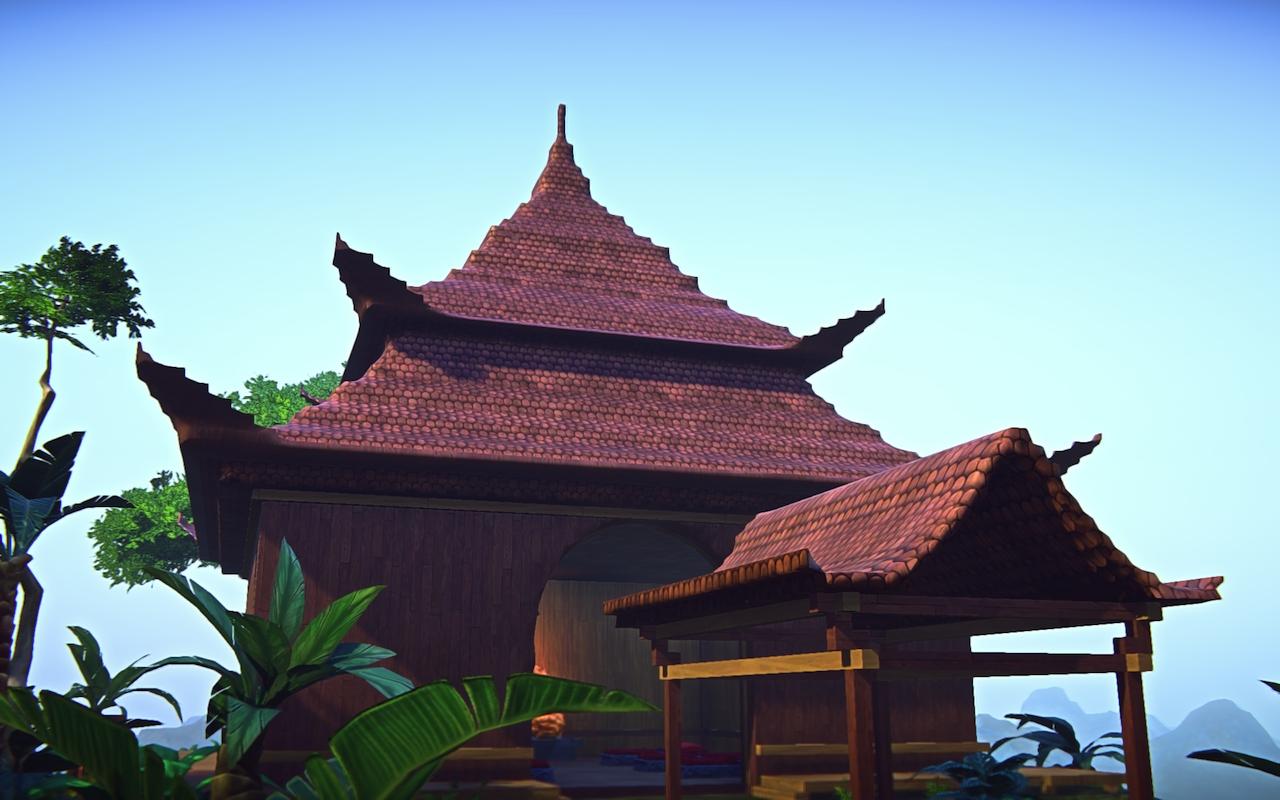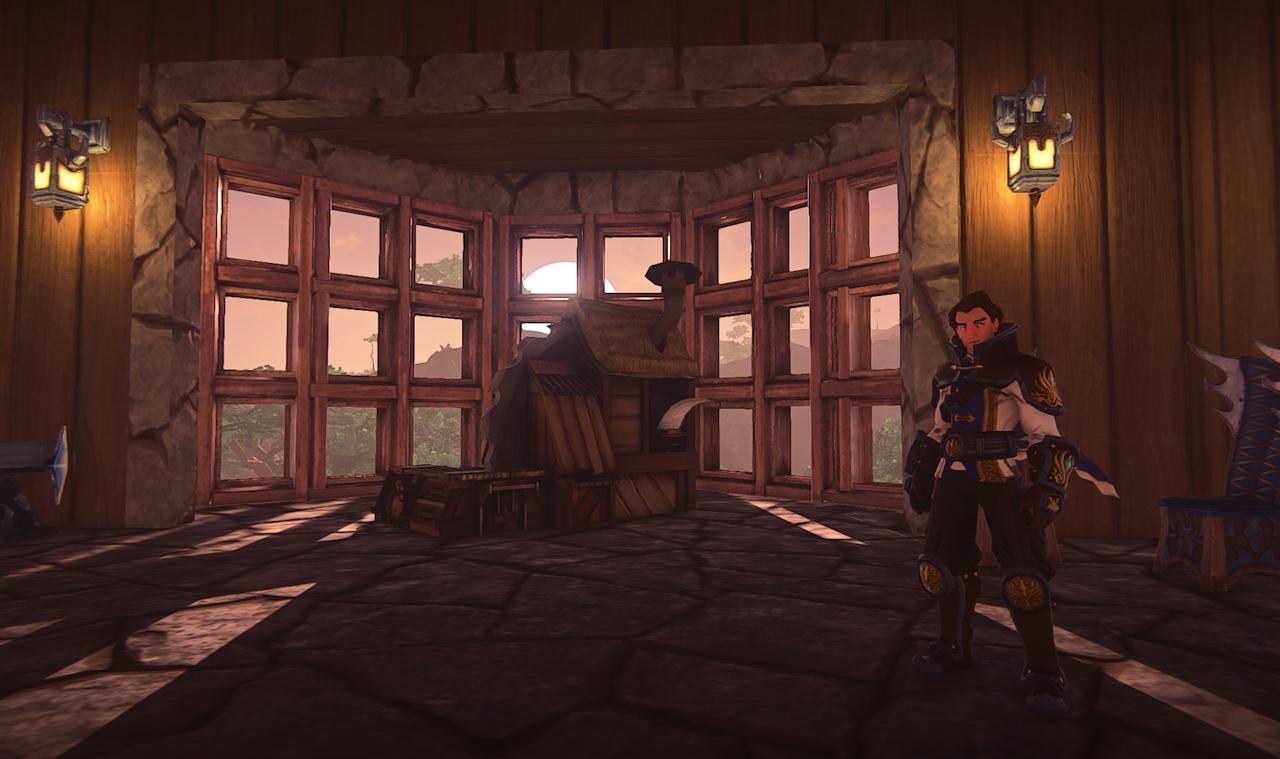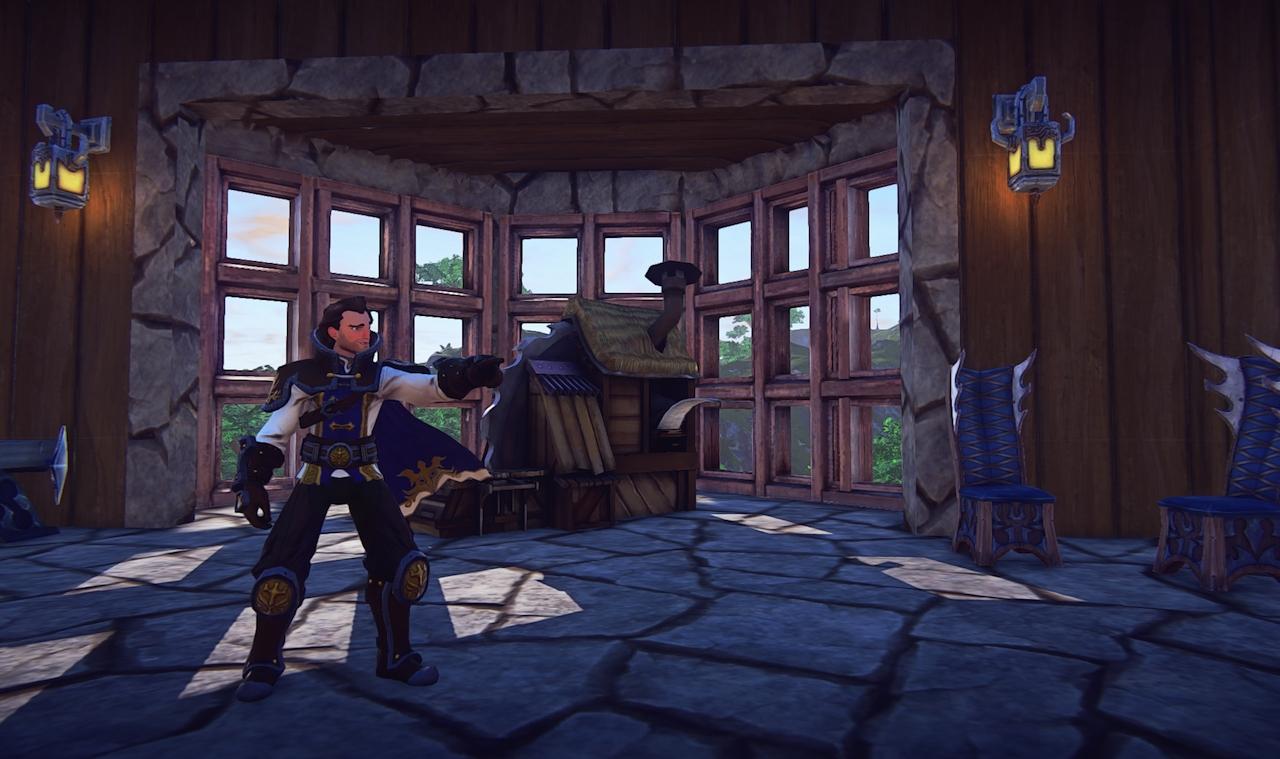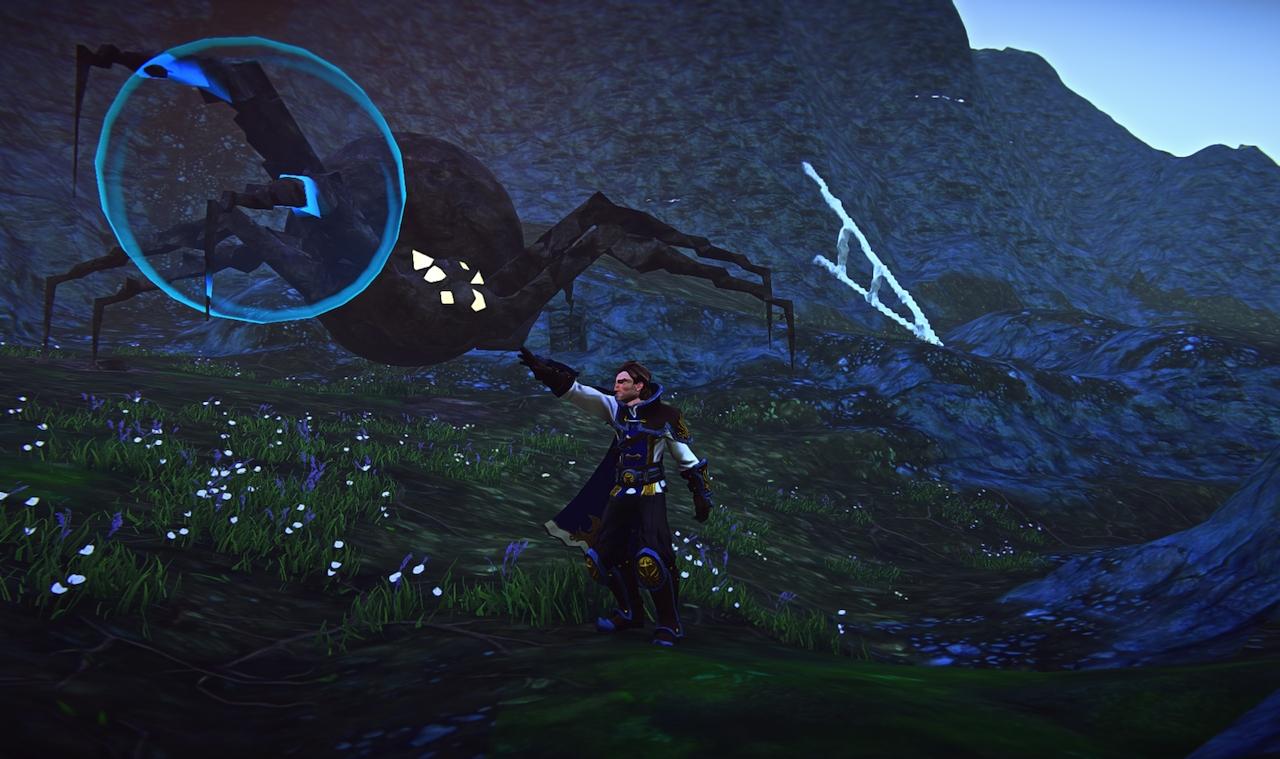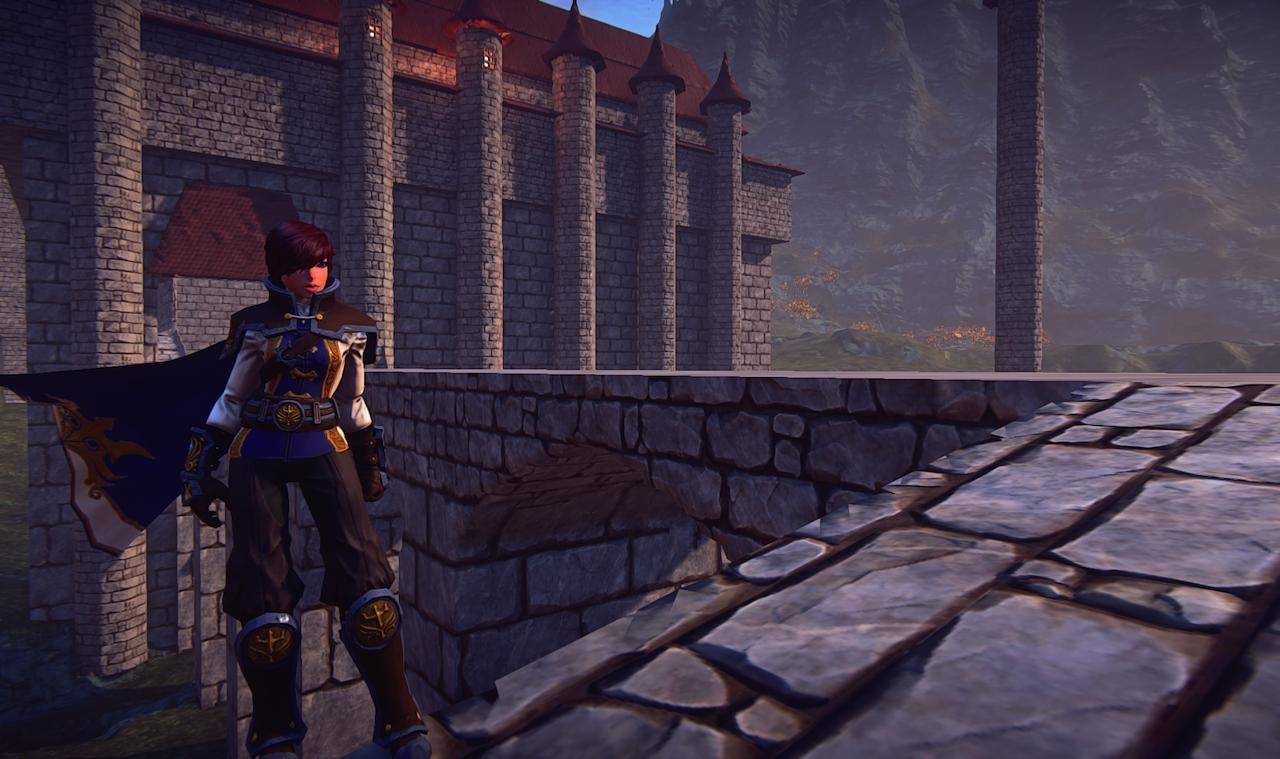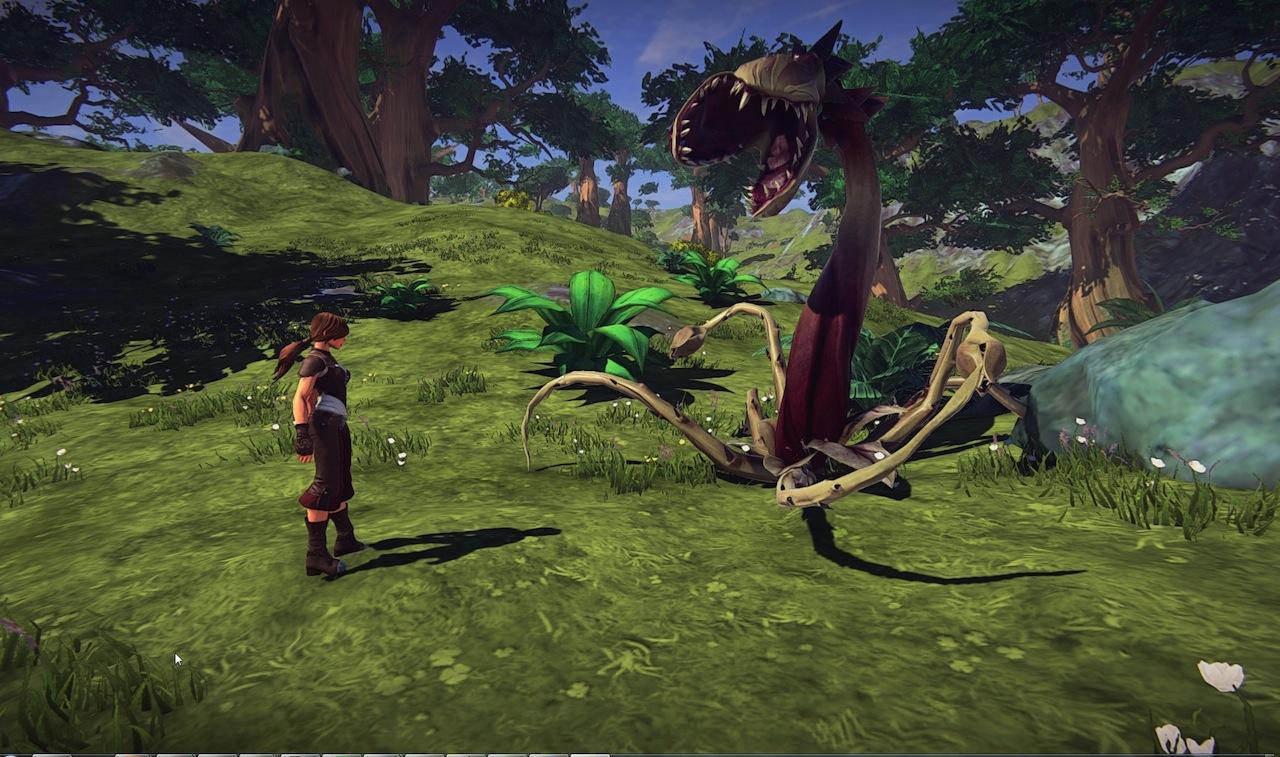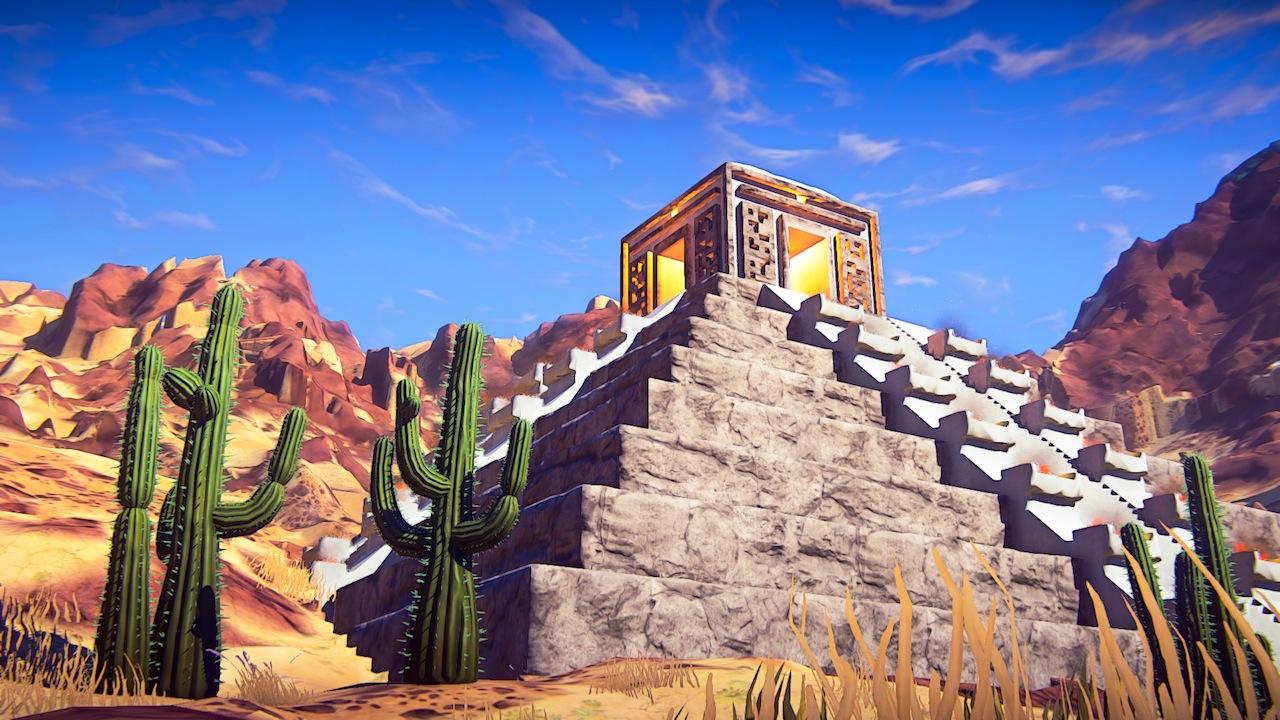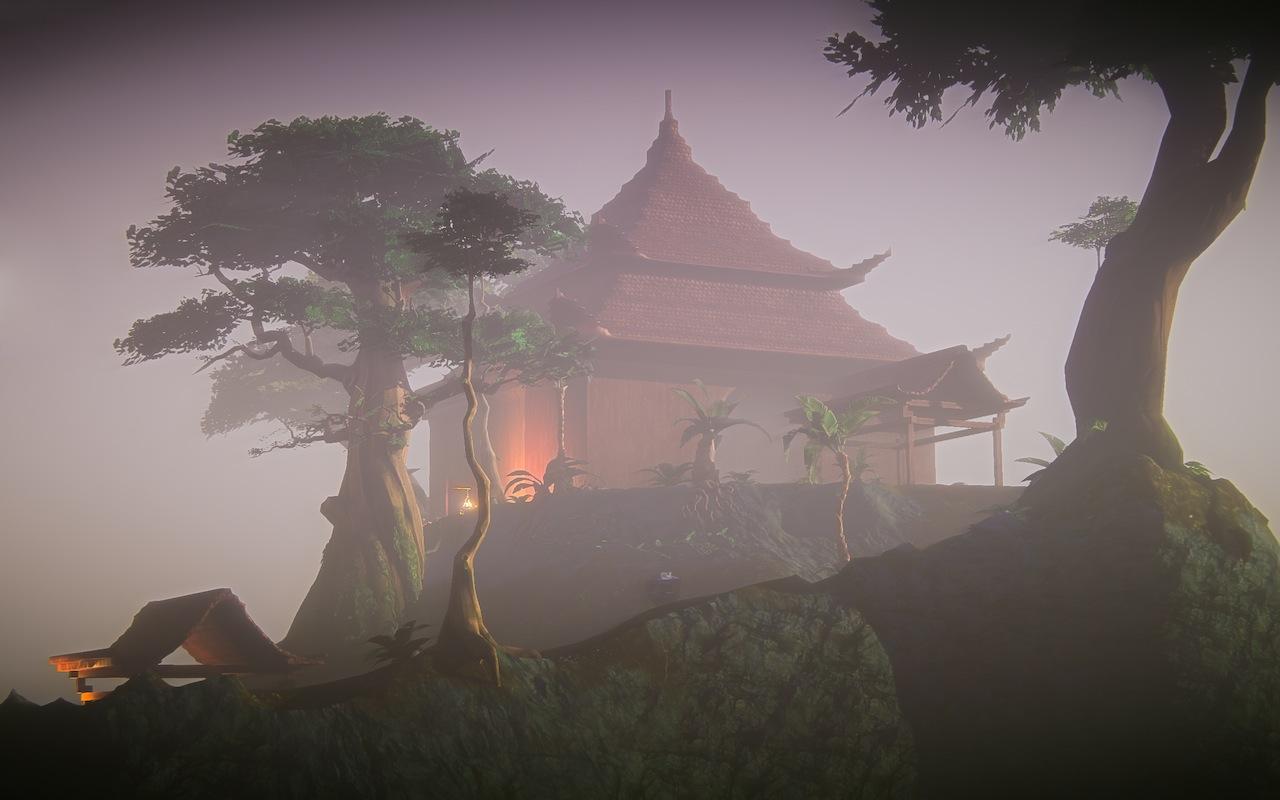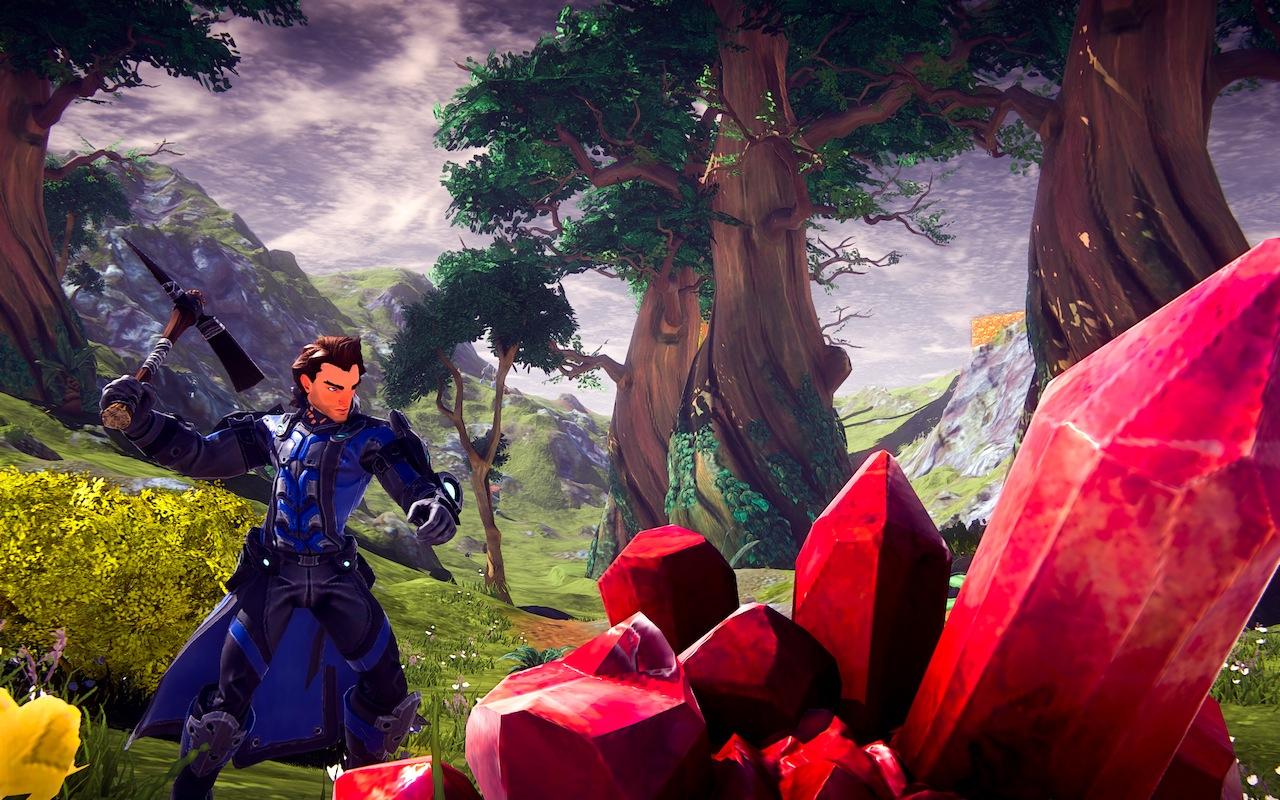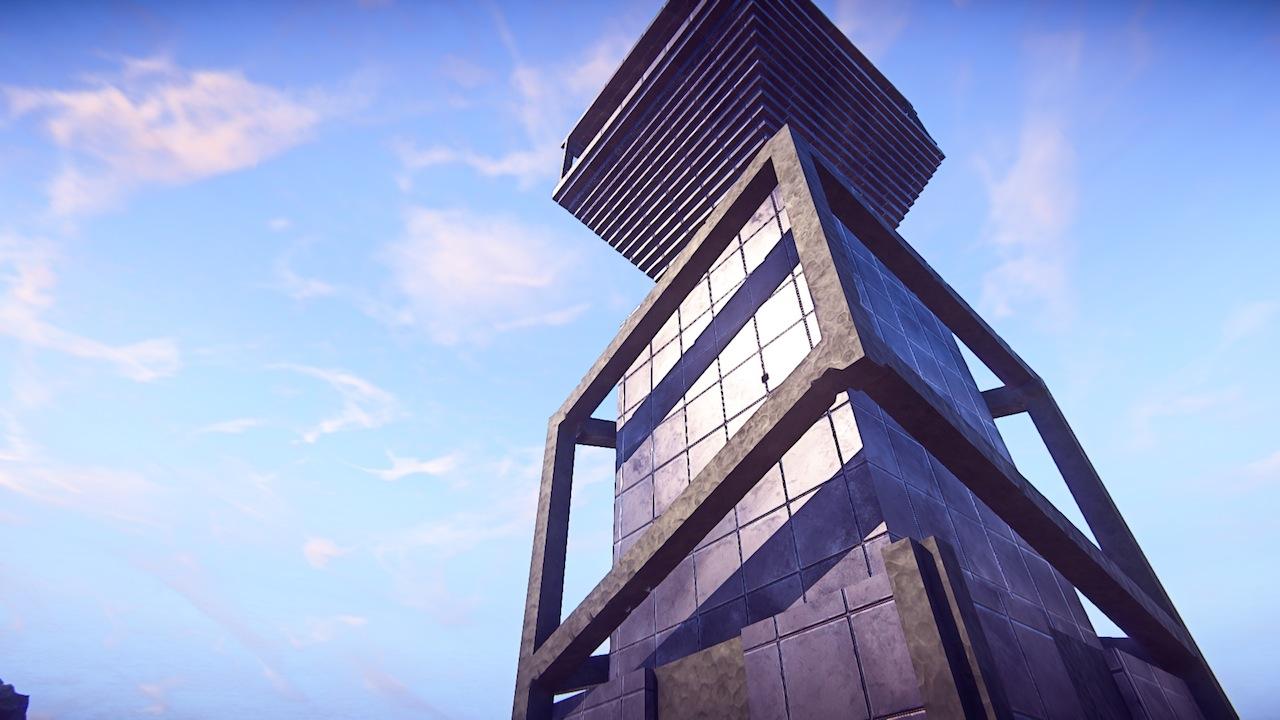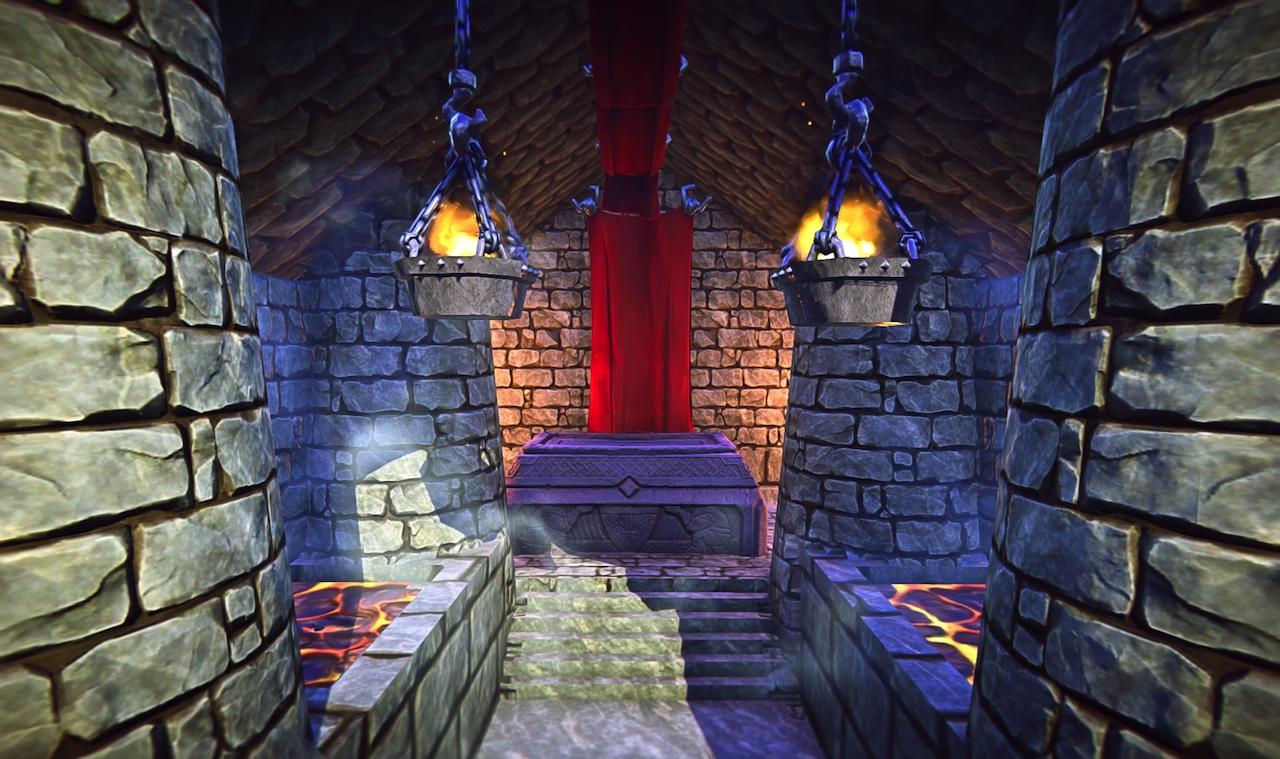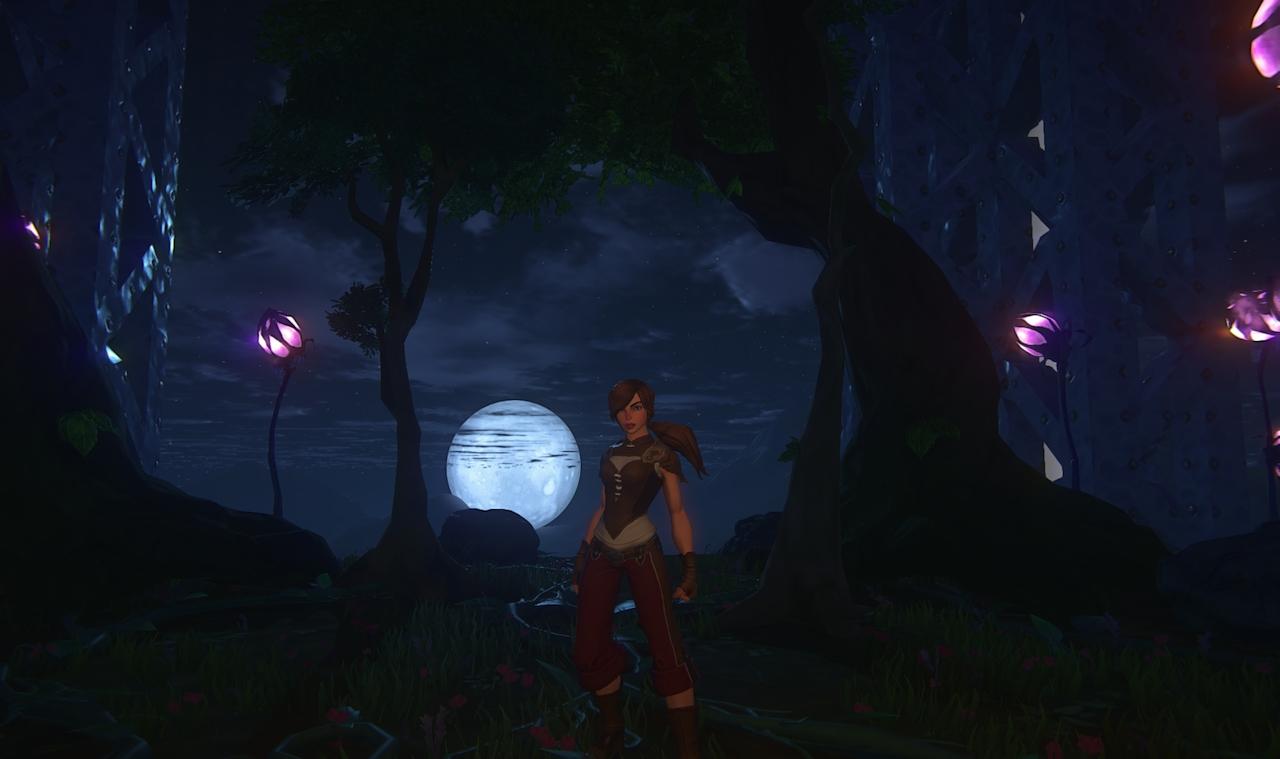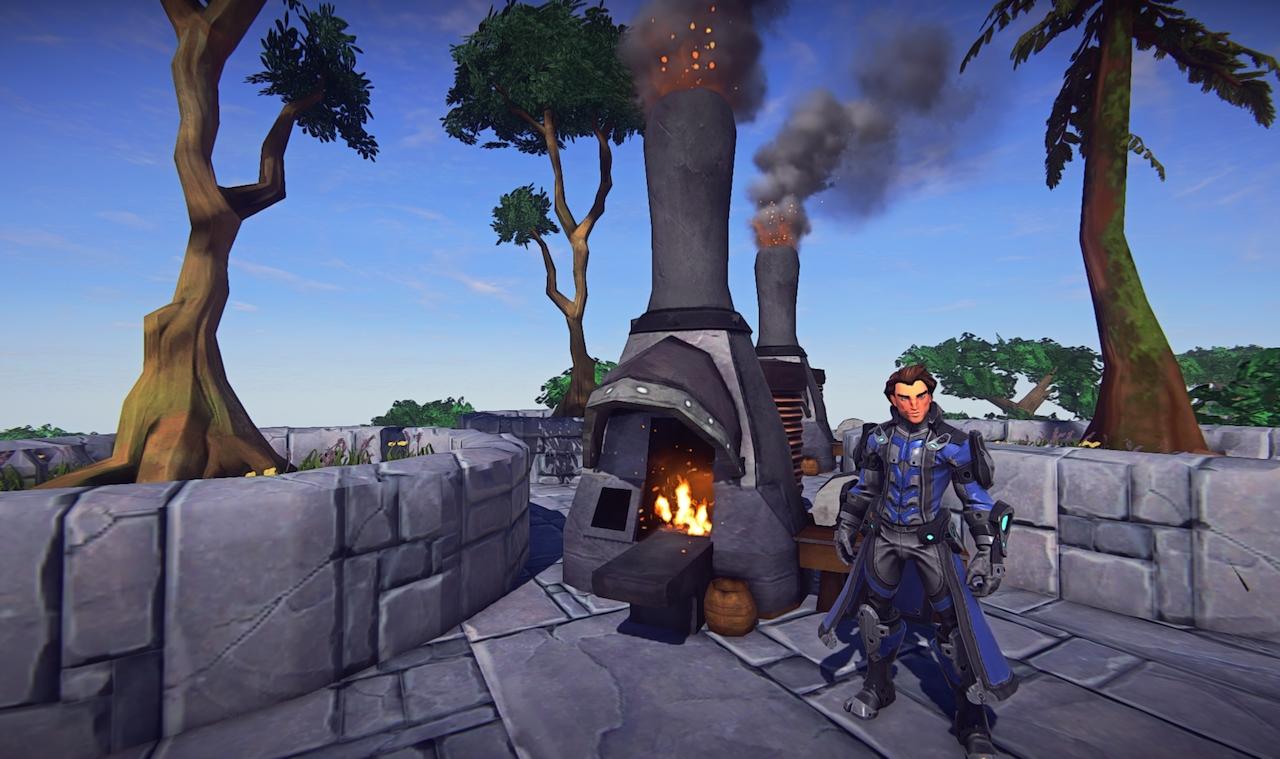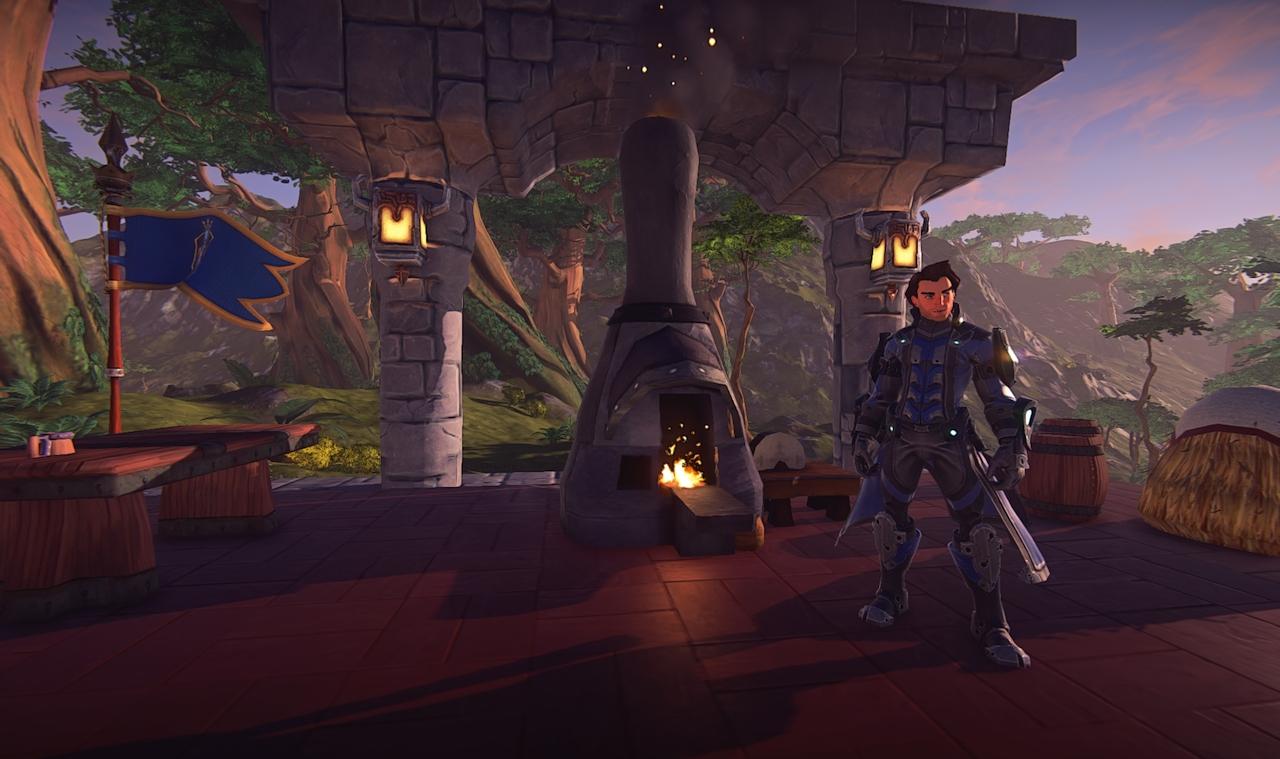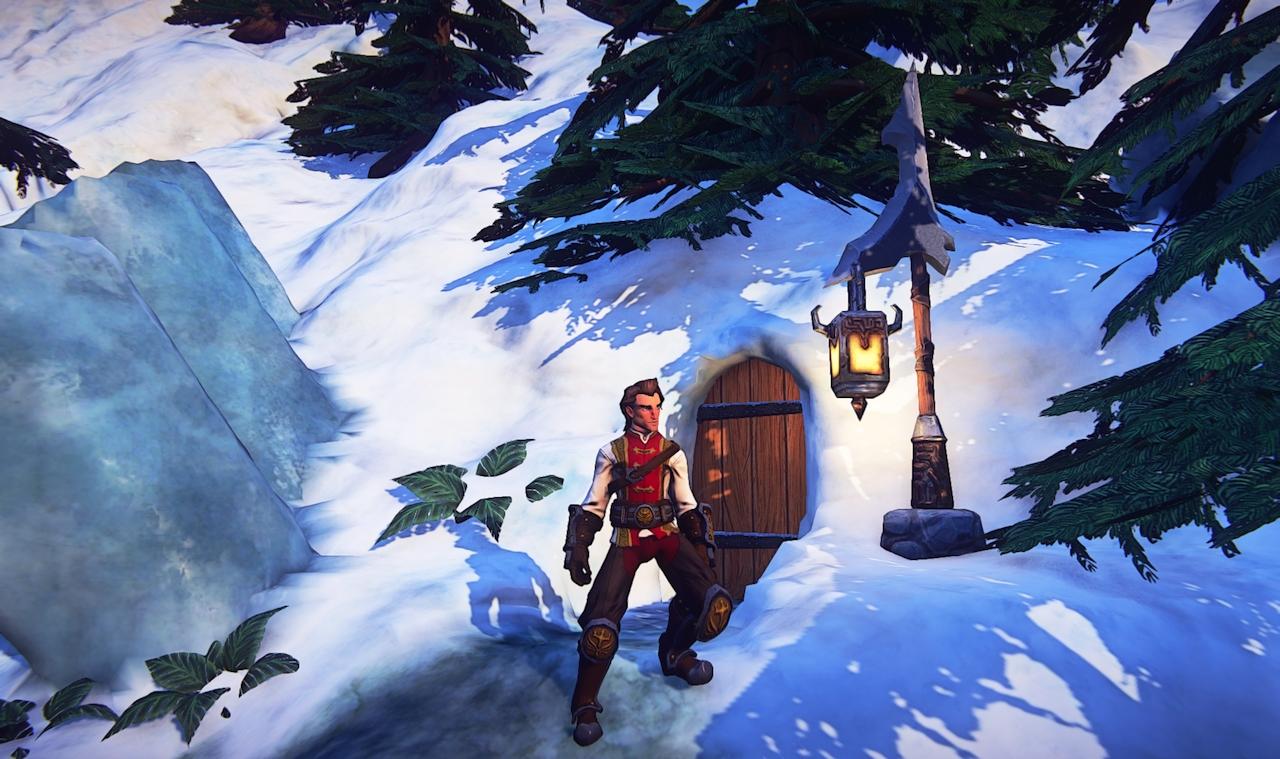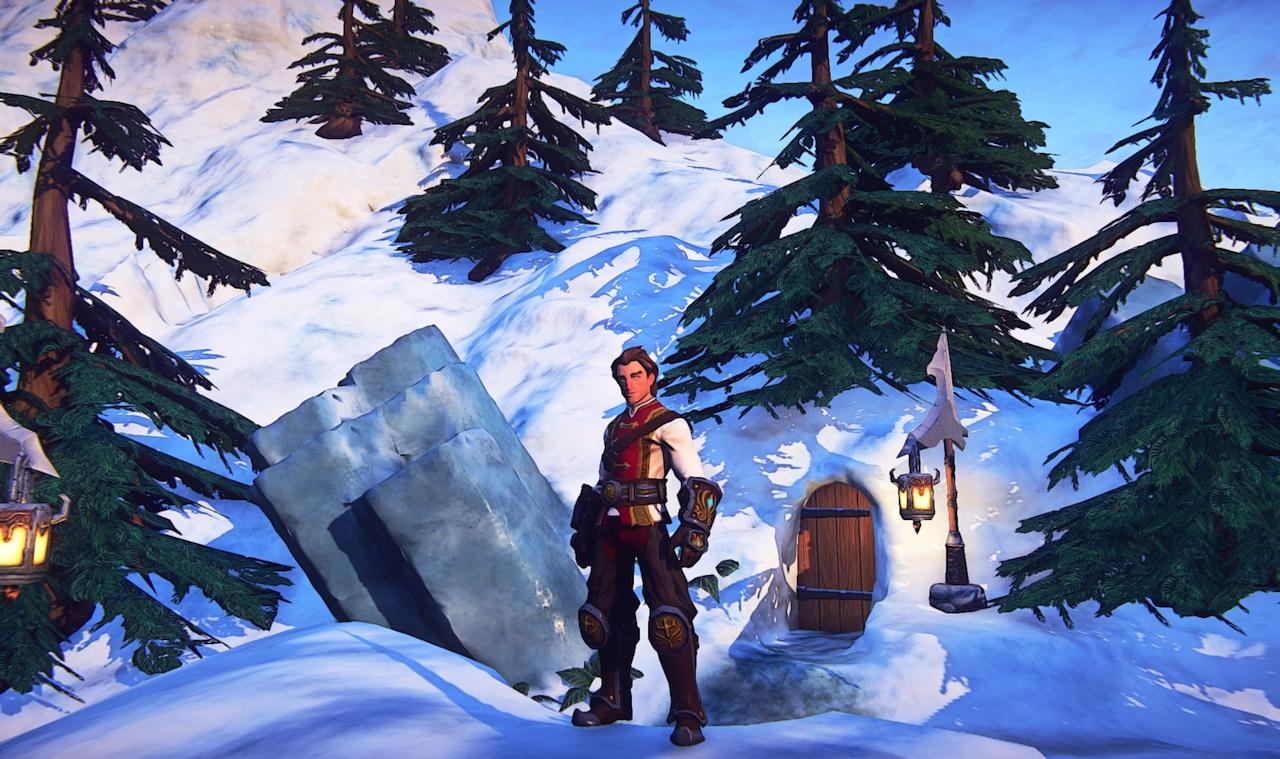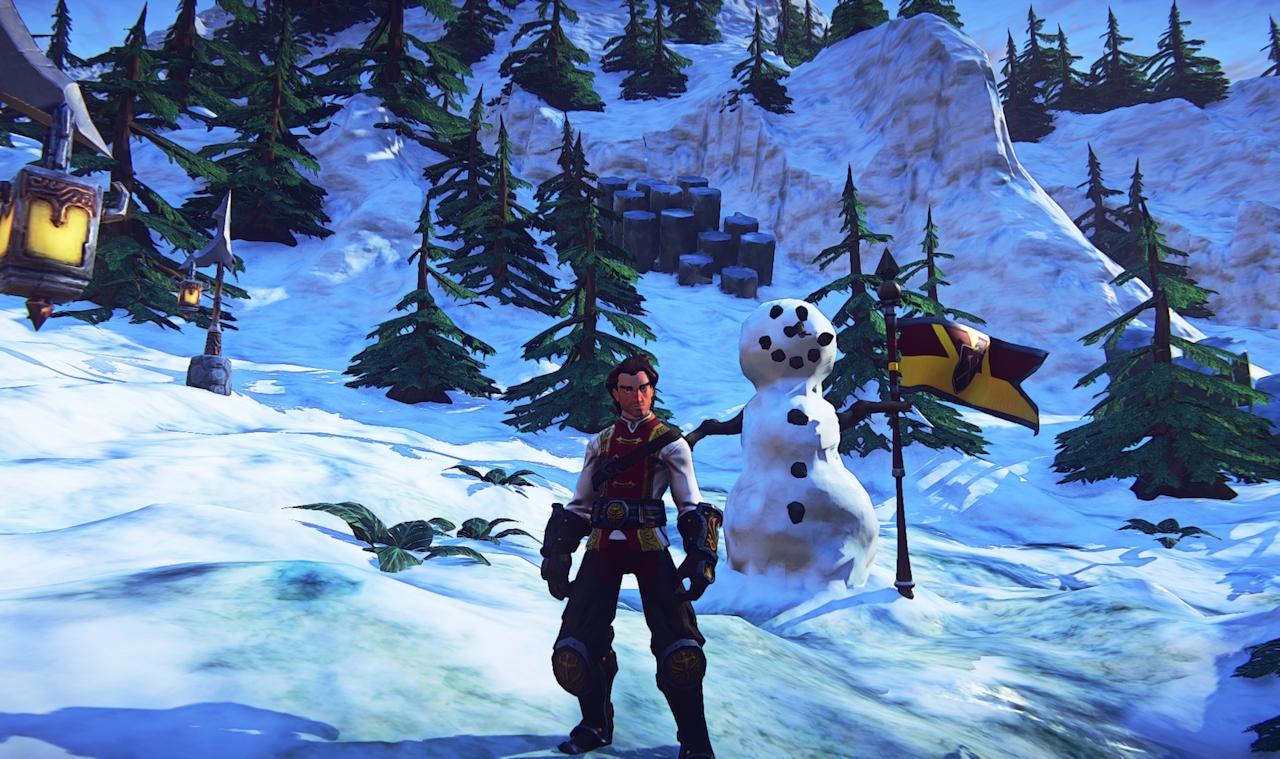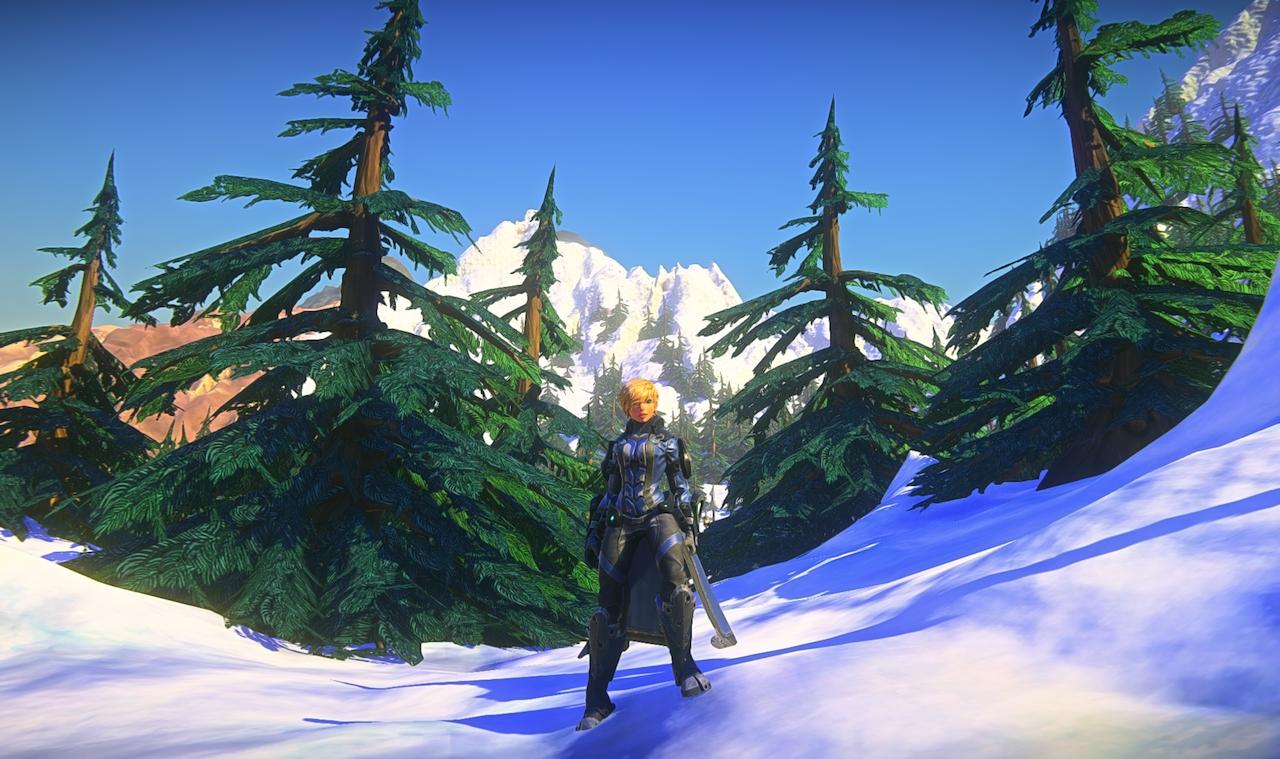EverQuest Next Landmark alpha lands today: Everything you need to know
Later today, Sony Online Entertainment does something the developer of titles like EverQuest, PlanetSide, and DC Universe Online has never done before: it invites gamers into alpha code that's far, far from being shipping-ready. EverQuest Next Landmark is the first step of a two-punch release that will launch SOE's next-gen MMO, fifteen years after EverQuest hit shelves, and a decade after EverQuest 2.Unlike all previous versions, however, Landmark will be seen by public eyes well before its signed-off as market ready. "This is not a bug-hunt" Dave Georgeson, director of development laughs, "it's a 20,000 person dev team." We joined the developers to get some early hands-on time with the alpha and to find out exactly what players can expect from this new universe.
EverQuest has been around a long time, but it's about to see a big change. EverQuest Next, as the upcoming addition to the franchise has been dubbed, will see more of what gamers loved about the previous two versions: huge virtual worlds to explore, battles to be fought, and guilds to be joined and grow.
Preceding EverQuest Next, though, is EverQuest Next Landmark. Inside, that virtual world is undeveloped and raw, a huge sandpit in which creative gamers can stake a claim and start building, training characters, and even set up stores selling their best creations for real-world cash. The best of EQN Landmark will even make it through into the EverQuest Next release, as preloaded items complete with credits for their player-creators.
Games like Minecraft have already shown us quite how compelling it is to be a digital builder, but Landmark aims to break new ground in other ways, too. The alpha, which opens later today, is a first in mainstream gaming: right now, Georgeson admits, roughly 60-percent of the gameplay is actually finished, and yet they're already going to let people play with it.
"Opening up the game at an alpha state is something we haven't done before" Georgeson pointed out to us. "Betas are kind of frustrating for developers. Gamers want to have a big impact during betas, but it's mostly done."
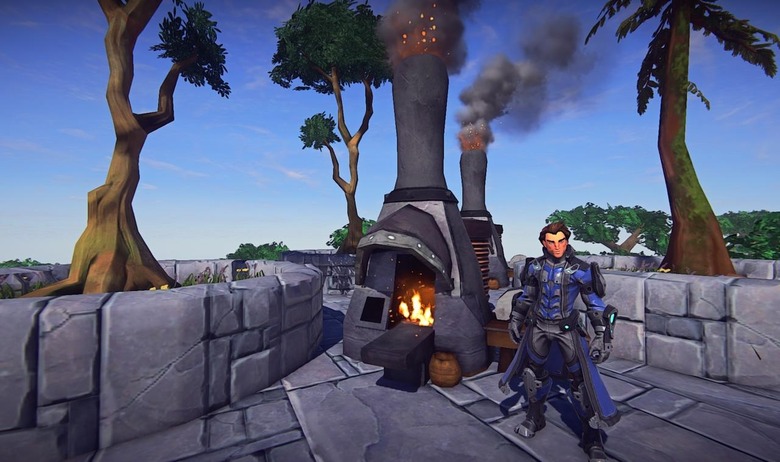
Only those who have stumped up at least $59.99 for a Founders pack at Explorer or Trailblazer levels will get access to the alpha, though that's still expected to be around 20,000 players in all. What they'll find is a vertical slice of play from top to bottom, though with many of the features expected to be in the final release later in 2014 still to be added.
"That means there's bugs, that means there's problems, but that's what we want: the players to get in and voice their opinion this early, when the development can actually change. Most companies in the past listen, change as much as they can, but are really working toward an end-date"
Initially, the Landmark alpha focuses on building and construction, the core tools for fleshing out a new world. Players will be able to mine, explore, gather resources, and craft, though achievements still need completing and there's no support for battling between characters. In fact, there's really no danger in the game at all, for the moment, no risk versus reward.
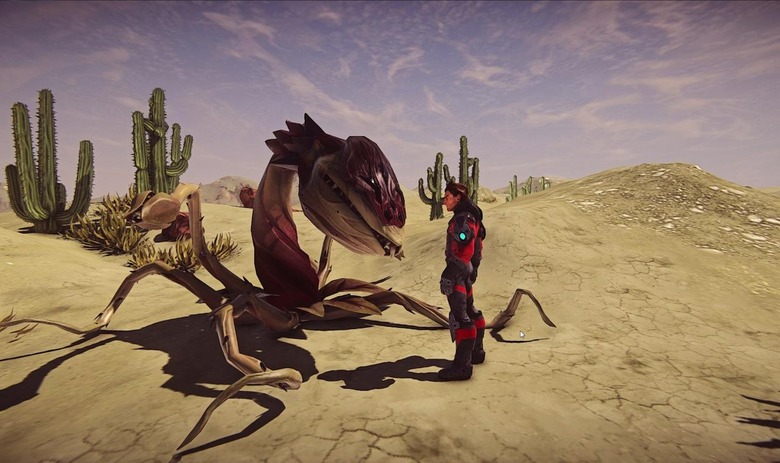
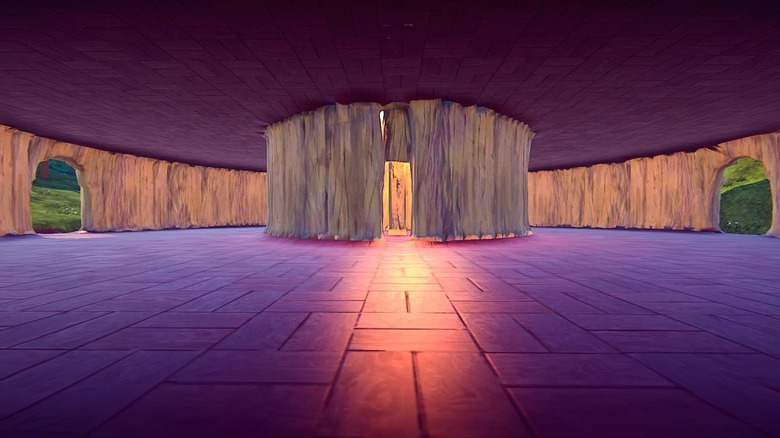
The worst sort of behavior players will be able to inflict on each other sounds more like mischief than malice: destroying parts of other player's constructions (if they've foolishly given you building permissions) or closing over a hole they're digging while they're still in it (which they could easily dig their way out of).
The most danger is probably to your spare time, if you're one of the alpha founders. "It's the biggest distraction you've ever seen" Georgeson explained, because of the way tools and ability tiers are layered and interdependent. Though the final game will have five tiers – like copper or tin working, for instance – only the first four will be present in the alpha, spread across different islands each roughly a virtual 8km square.
Landmark can be boiled down to finding a spare space, staking a claim to it, and then gathering the raw materials – and the skills to work with them – to build houses, castles, or whatever else you want on your plot of land. The progression through learning different tools will get more complex, and though you can be gifted more advanced tools or other items by in-game friends who have already earned them, you won't actually be able to use them until you've gone through the process of gaining the relevant skills.
That in itself could take a while, if you want to be the very best. "It would take you more than nine hours to go through the process of making the best pick" creative director Jeff Butler explained, "assuming you have all the materials." Figure on thousands of hours of work to contract a small house, he estimated.
Initially you'll learn your skills at one of the core crafting stations around the island hubs, but players will also be able to construct more advanced tools and stations to take to their own claimed areas. There, surrounded by a buffer zone for future expansion, they're safe from having their constructions destroyed or tampered with; they also get underground and airspace rights, though neither is taken advantage of in the alpha.
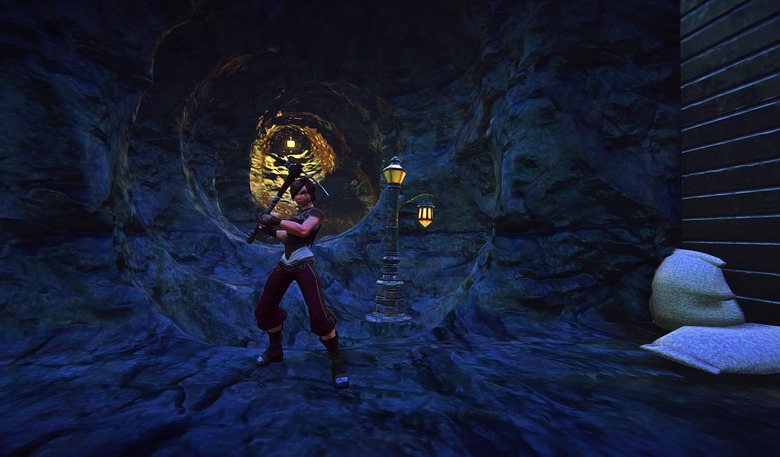
Then it's a case of gathering up raw materials, chopping down trees and digging up seams of copper and stone. Caches of health, stamina, energy, and manna will also be hidden around, along with props to decorate the buildings you make. Players can teleport between islands, and eventually there will be transportation ley lines to quickly move around each one.
Even with an influx of 20,000, SOE doesn't expect the islands to get crowded; in fact, only 1/15th at most will be open to claims, so as to leave resources for others to gather. Once each is depleted, it will regenerate in a random position elsewhere. Although initially people will be able to claim a spot as soon as they join the game, eventually they'll need to gather sufficient resources to get the first claim flag. Alpha players will also be limited to one claim at first, so that SOE can track system load more easily, but the goal is to support multiple claims per person, albeit with rising levels of what amounts to rent in order to keep them.
Even if you stop paying that rent, while you may lose your spot you won't lose your constructions. EverQuest Next Landmark uses a template system, where what you've designed is backed up – either in whole or in part – to your account, for reconstruction (assuming you have the raw materials) elsewhere. Those templates will eventually be able to be sold through the existing Player Studio, a shortcut for other gamers to get decorative props, customized tools, buildings, or other assets without having to manually construct them themselves.
We're talking real-world money in the Player Studio, too, and it can add up. SOE has one 17 year old PlanetSide 2 gamer who made $8,000 in a month by selling a camouflage pattern he designed. In fact, SOE envisages teachers using Landmark as an in-class tool to teach computer game design, or would-be designers using what they've made to flesh out their resumes.
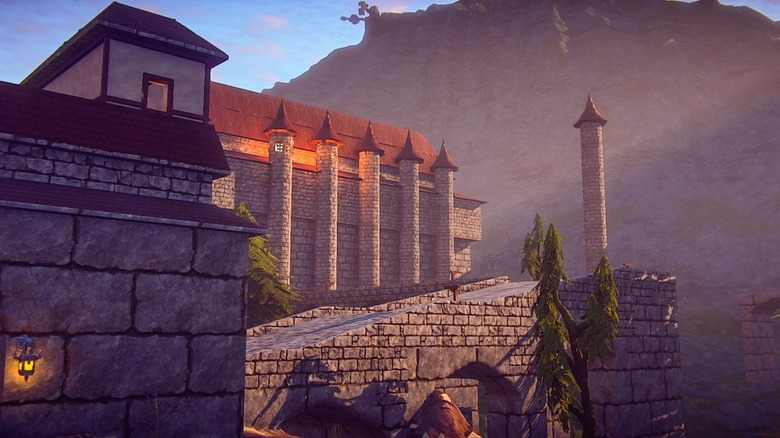
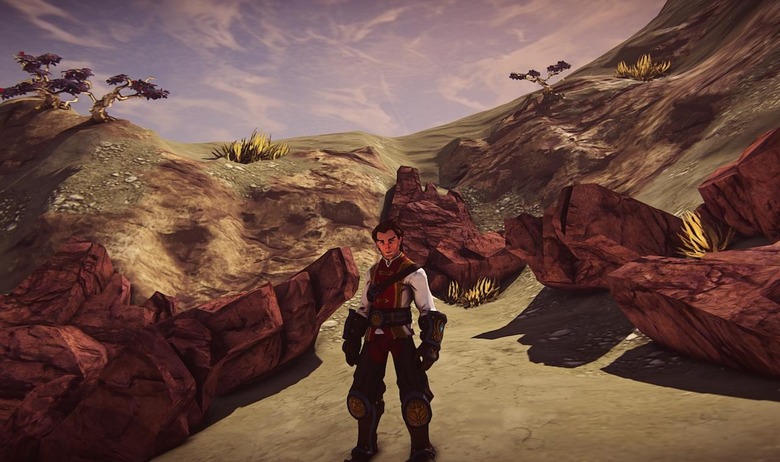
Within the game, there are plans for a non-playable merchant character, with which players will be able to trade-in items and get virtual currency, though that won't be ready for the alpha's launch. "It's much quicker in Landmark and EverQuest Next to build stuff, but it still takes time" Butter pointed out. "The driver is, if you see something on Player Studio and you think it looks amazing, you can go out and find those skills, and those resources, and take inspiration from it, or you can buy a template from them in Player Studio instead."
Both routes will pay dividends to Landmark's more creative players. While selling templates will be a more direct route to rewards, SOE is also building in what amounts to a kudos system: if enough people rate your products, or what you've constructed in the game, highly enough, you'll be rewarded that way too. That level of kudos will be carried over as a rating in the Player Studio, too.
"I'm really proud of the fact that SOE is white-hat," Georgeson told us. "We're not trying to rip the coin out of people. Landmark is set up that way: yes, we sell stuff, but everything we sell is available in the game. You don't have to buy it."
Building is, we found when let loose on EverQuest Next Landmark ourselves, both the primary appeal and the frustration of the game. The team has given no small amount of thought as to how the virtual landscape and the "voxel"-scale blocks you build with are manipulated, though the system does take some getting used to. Shapes, materials, and finishes are accessed through a pane on the left, organized by metal and wood for instance, while you control how big the blocks are with the mouse's scroll wheel. Tab cycles through shifting the block itself – or a selection of blocks – in three-dimensions with the wheel, or you can rotate them instead.
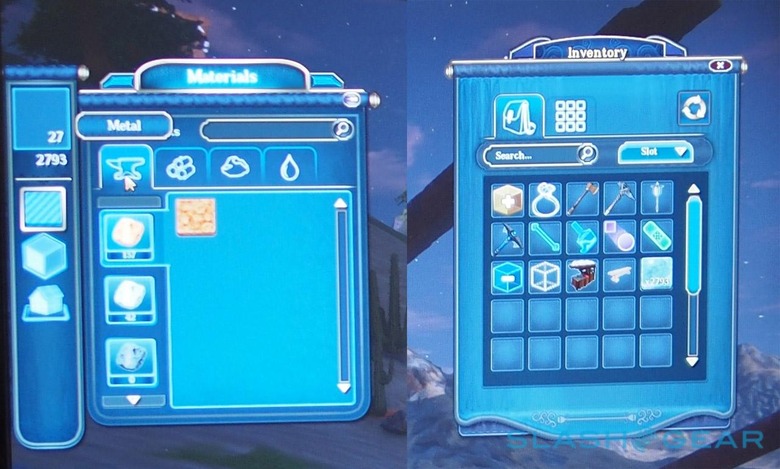
Not all of the tools for manipulating objects in the world come as standard, however. We played Landmark in "God Mode" so that we didn't have to go through the various stages of earning skills, but regular alpha players will start out with "add", "delete", and "heal" and then have to develop abilities like "smooth" and even "select".
Even the tools themselves will vary: the pickaxe you make might end up being a relatively dull one, or a particularly sharp one, and some gamers might choose to go through the process a second time to try to end up with something better. Those players who have gathered up special relics will be able to use them to increase the likelihood of whatever they're working on being closer to the top of the scale, but either way there'll be some maintenance, too. SOE is working on a system whereby tools will dull over time, and require sprucing up to stay at their most effective.
All this is tracked in the resource collection, a floating panel showing you not only what tools and skills you have and the related statistics, but what's still to achieve and how you'd go about it. Key abilities and tools can be dragged down to the launcher bar at the bottom, and selected with the number keys.
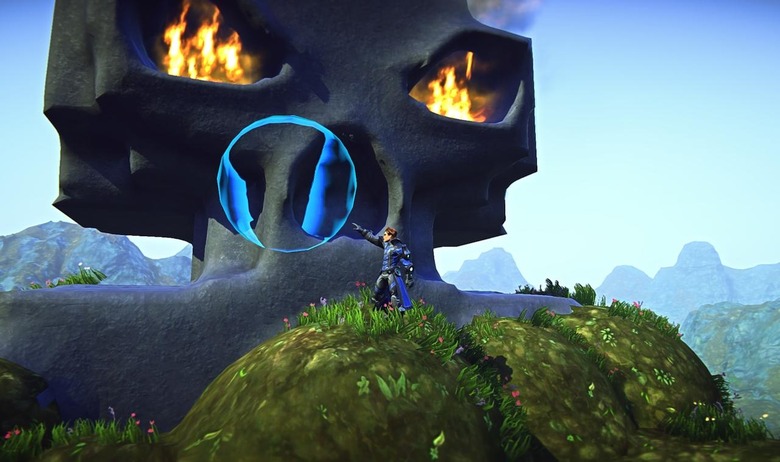
Sony Online Entertainment's goal with the resource collection is to make it an in-game journal of sorts, and reduce the amount of external digging players will need to do in order to understand how to progress. So, rather than having to exit Landmark and run to the wiki, the resource collection will explain exactly what the process is of gaining, say, tin skills, including the general places where players might initially go looking to mine.
Like a lot of planned elements, the full journal won't be available in the alpha opening today. Other elements, like the character creator, will also be pared back: players will be able to choose 3-8 selections of skin tone, eye and hair color, facial hair, and outfits, as well as gender, and give their character a name. Initially, that name will need to be unique for each of the 20,000 people, but EverQuest intends to eventually roll out a system where each gamer will have a unique handle to which their choice of name – even if it duplicates someone else's – is appended.
Building out a virtual world quickly gets addictive, and it's interesting to see the different approaches even just a small selection of players take: mountaintop aeries, impossibly narrow spires, traditional houses and castles, and even floating platforms. Of course, there'll always be some gamers who prefer to troll the system, using the tools to create obscene or just rude structures.
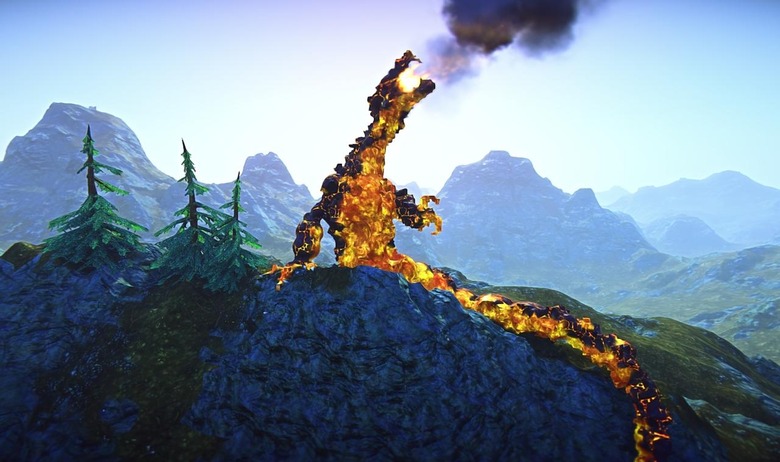
Perhaps unsurprising for a game which has so broadly embraced crowdsourcing, EverQuest Next Landmark will address trolling by the wisdom of the crowd too. "There are a lot of thin-skinned people, and we're relying on them" Georgeson explained. "They're going to be walking through the world and reporting it, and we'll be keeping track of what reports are made and whether they're reliable, and tracking who are the most reliable people." That way, new reports from those with high-kudos in the system will get pushed to the top of the customer support team's queue, and the offending item will most likely go invisible to all but its creator.
Still, Georgeson doesn't expect trolling to be particularly commonplace, despite what happens in other MMOs. His argument is that the combination of having to earn the skills and gather the resources to create something, as well as even just the claim flag to begin with, will put off all but the most ardent of trolls.
Thinking like that is what will help set EverQuest Next Landmark apart, as well as make the alpha all the more interesting. Since they're being treated as part of the dev team, the early players will get to see their discussions, too: hitting F12 at any point brings up "Dev Talk" where speech bubbles show the discussions, arguments, and general thinking between each stage of the game.
In short, they're providing not only feedback but a vital stress-test to a world that has currently seen, at most, around 300 people on a single island. Their opinions will be for SOE's ears only, however, at least during the alpha: every player has signed a non-disclosure agreement (NDA) promising to keep the details secret.
"Landmark is kind of the beginning of something really special," Georgeson predicts. "Players will be really involved, and help us craft it, and that's all well and good. But what we're doing, you're beginning to see all over the industry, people opening up their alpha. but as far as i know this is the boldest way of doing it so far: treating players as if they're part of our team."
SOE isn't sure how the process will work out overall, but the development director is confident that Landmark's alpha will be seen as the first step in a new approach to creating titles. "Where we're going with this, and where it could grow, could theoretically change the way games are developed in the future" he argued. "It could snowball, become almost a crowdsourcing of games. We're on the threshold of that."
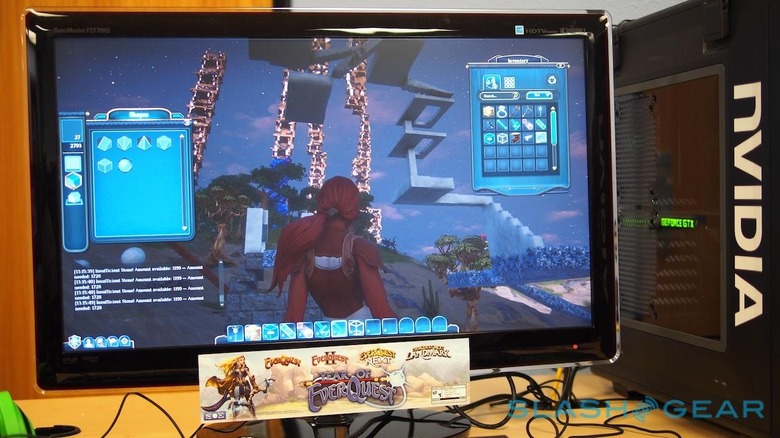
Timescales for the alpha aren't concrete, with the EverQuest team planning to run it until the game is at 95-percent of features and ready to go into closed-beta. "It will be measured in weeks to months, not months to years" senior producer Terry Michaels says. After that closed-beta will be an open version, and then finally the full release: Landmark will be free-to-play, with SOE making its money from the cut it takes out of everything sold in the Player Studio (along with, of course, EverQuest Next sales).
What's clear is that the gameplay on show today is unlikely to be the same gameplay that goes into closed-beta and beyond. The combat engine will change things dramatically, not just in terms of one-on-one fighting, but the ability to craft elaborate in-game storylines around battles-for-sport and more. For instance, the team suggested, a group of players could set up an arena for staged battles, complete with a list of rules and a set of starting abilities participants possess, and then begin their own league.
Meanwhile, Michaels told SlashGear, the team is already looking at how mobile gamers can be integrated into the EverQuest universe, potentially creating cross-platform guilds that would cooperate on the desktop and on their phones.
"Plans are subject to change," Georgeson concluded, "we still have a lot to do, but this team is good. This team is great, they're amazing; we expect to be able to get a lot done over the coming weeks." The open alpha may be more than a little scary for Sony Online Entertainment, but it's a huge opportunity for developers and players alike to "grow the game together."
Check out our interview with EverQuest senior producer Terry Michaels for more on the groundbreaking open alpha

